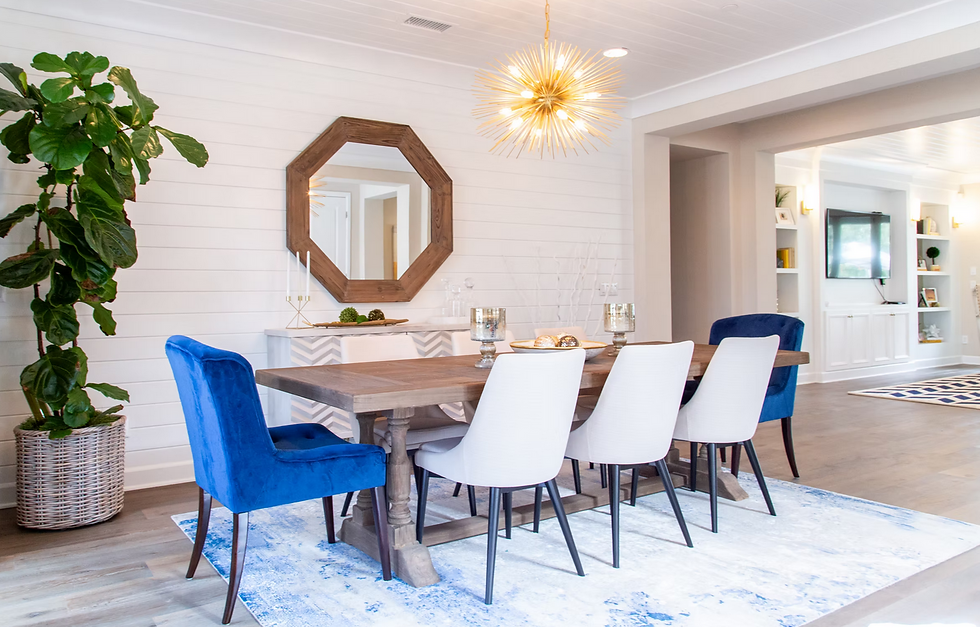Outstanding Ways To Talk About Your Style With Home Pros
- Vision Interiors
- Dec 10, 2021
- 3 min read

It is crucial that you communicate clearly and concisely with professionals if you want to work together on a home improvement project, such as an architect, landscape designer, or interior decorator.
This will allow your designer to understand what you are looking for. Understanding your needs and preferences is key to gaining inspiration. This will allow you to have these important conversations and exchange ideas with your designer.
Make a Not-for-Me List and a Love List
When you meet with interior designers, it's a smart idea to take pictures and have ideas. Have you ever thought about making a list of the things you don't like? Perhaps not surprisingly, these dislikes can be just as important.
Visualize your thoughts
Interior designers are visual. Therefore, it makes sense that images are the best way for you to express your thoughts and feelings. This makes it easy and clear.
You might consider "desert style" to be southwestern, with lots of natural woods and bright textiles. But your designer envisions a Palm Springs midcentury desert feel. Conflict is inevitable.
If you can point to a photo and say "I really like this look" or "I don’t really like it", your design professional will quickly be able to get on the same page. This is how it looks.
Add images immediately that relate to your job
This is a great place for you to start: currently, take pictures of the jobs that interest you and those that don't. If you are working with a landscape architect, or landscape designer, photographs of landscapes can be a great place to start.
Before you hire an architect to remodel or build your house, our interior designer suggests that you look for photos of exteriors and interior design. Start looking for kitchen photos if you're redesigning your kitchen. We believe you can see the whole picture.
You can include photos that are not on the topic.
Images that aren’t directly related to your project don’t have to be included. However, they can still be a great example of a style you like or hate. You can use images of your lifestyle, food, or gardens to illustrate color palettes. These images can be used to help your designer understand your overall design better than photos of the actual project.
Practice Being Picky
You can choose as many photos as you want from your idea books when you fill them with photos. Enjoy it! When you're ready to return for another look, it's time to be selective. Reduce each list to 10-20 of the best examples.
This will give your designer a smaller selection of images and will help you practice making design-related decisions. The more you use your design strengths, the easier it will be to discuss them.
Be Specific
Although it is helpful to be able point to an image you love or loathe, it can cause confusion and miscommunications if your description of the space is unclear.
Your interior designer might be more concerned with furniture design than you are about color palettes.
You can find the meaning of each space by looking at the notices below each image in your idea book.
Use the following checklists as a guideline to help you choose how many to add to your own list.
The Things You Love Checklist
Favorite color combination or color combinations
The NOT FOR ME Checklist
Strong aversions to certain colors or shades of colors. If you have made it this far, you deserve a huge pat on the back. It can be hard to get your design right. Your designer will be able guide you through the whole process. You will be more productive with your designer if you are more involved on the front end.
If you still have trouble defining your style, try thinking laterally: Are there brands, restaurants, or stores that express your love and hatred?
If the designer is familiar with the places you have chosen, this can help add style information to your portfolio.
It is important to communicate your preferences to an interior design professional. Once you have communicated your preferences, it is equally important that you take a step back to allow your designer to create creative ideas.
All of the things you love are there. While you might not be able to love all of them, you can still work towards finding the one you love. It might surprise you to discover that you are a fan of something you never knew you liked, thanks to the creativity of an interior designer.




Comments